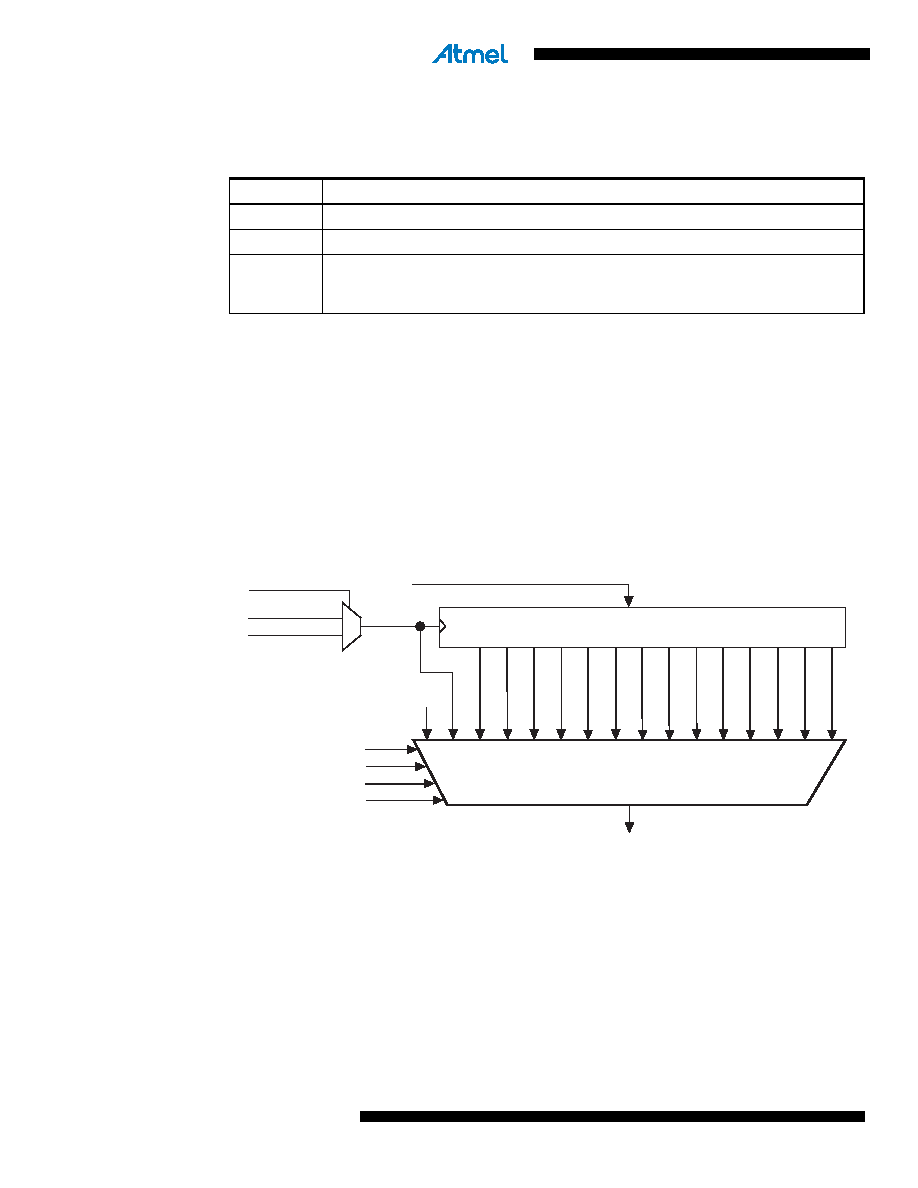- 您現在的位置:買賣IC網 > PDF目錄272328 > T83C154DXXX-20 (TEMIC SEMICONDUCTORS) 8-BIT, MROM, 20 MHz, MICROCONTROLLER, PQFP44 PDF資料下載
參數資料
| 型號: | T83C154DXXX-20 |
| 廠商: | TEMIC SEMICONDUCTORS |
| 元件分類: | 微控制器/微處理器 |
| 英文描述: | 8-BIT, MROM, 20 MHz, MICROCONTROLLER, PQFP44 |
| 文件頁數: | 235/242頁 |
| 文件大?。?/td> | 3080K |
| 代理商: | T83C154DXXX-20 |
第1頁第2頁第3頁第4頁第5頁第6頁第7頁第8頁第9頁第10頁第11頁第12頁第13頁第14頁第15頁第16頁第17頁第18頁第19頁第20頁第21頁第22頁第23頁第24頁第25頁第26頁第27頁第28頁第29頁第30頁第31頁第32頁第33頁第34頁第35頁第36頁第37頁第38頁第39頁第40頁第41頁第42頁第43頁第44頁第45頁第46頁第47頁第48頁第49頁第50頁第51頁第52頁第53頁第54頁第55頁第56頁第57頁第58頁第59頁第60頁第61頁第62頁第63頁第64頁第65頁第66頁第67頁第68頁第69頁第70頁第71頁第72頁第73頁第74頁第75頁第76頁第77頁第78頁第79頁第80頁第81頁第82頁第83頁第84頁第85頁第86頁第87頁第88頁第89頁第90頁第91頁第92頁第93頁第94頁第95頁第96頁第97頁第98頁第99頁第100頁第101頁第102頁第103頁第104頁第105頁第106頁第107頁第108頁第109頁第110頁第111頁第112頁第113頁第114頁第115頁第116頁第117頁第118頁第119頁第120頁第121頁第122頁第123頁第124頁第125頁第126頁第127頁第128頁第129頁第130頁第131頁第132頁第133頁第134頁第135頁第136頁第137頁第138頁第139頁第140頁第141頁第142頁第143頁第144頁第145頁第146頁第147頁第148頁第149頁第150頁第151頁第152頁第153頁第154頁第155頁第156頁第157頁第158頁第159頁第160頁第161頁第162頁第163頁第164頁第165頁第166頁第167頁第168頁第169頁第170頁第171頁第172頁第173頁第174頁第175頁第176頁第177頁第178頁第179頁第180頁第181頁第182頁第183頁第184頁第185頁第186頁第187頁第188頁第189頁第190頁第191頁第192頁第193頁第194頁第195頁第196頁第197頁第198頁第199頁第200頁第201頁第202頁第203頁第204頁第205頁第206頁第207頁第208頁第209頁第210頁第211頁第212頁第213頁第214頁第215頁第216頁第217頁第218頁第219頁第220頁第221頁第222頁第223頁第224頁第225頁第226頁第227頁第228頁第229頁第230頁第231頁第232頁第233頁第234頁當前第235頁第236頁第237頁第238頁第239頁第240頁第241頁第242頁

92
2588F–AVR–06/2013
ATtiny261/461/861
counter value and so on. The definitions in Table 12-1 are used extensively throughout the
document.
12.3
Clock Sources
The Timer/Counter is clocked internally, either from CK or PCK. See bits CSxx in Table 12-17 on
page 116 and bit PCKE in “PLLCSR – PLL Control and Status Register” on page 120.
12.3.1
Prescaler
Figure 12-3 shows the Timer/Counter1 prescaler that supports two clocking modes, a synchro-
nous clocking mode and an asynchronous clocking mode. The synchronous clocking mode uses
the system clock (CK) as a clock timebase and asynchronous mode uses the fast peripheral
clock (PCK) as a clock time base. The PCKE bit from the PLLCSR register enables the asyn-
chronous mode when it is set (‘1’).
Figure 12-3. Timer/Counter1 Prescaler
In the asynchronous clocking mode the clock selections are from PCK to PCK/16384 and stop,
and in the synchronous clocking mode the clock selections are from CK to CK/16384 and stop.
The clock options are illustrated in Figure 12-3 and desribed in “TCCR1B – Timer/Counter1
The frequency of the fast peripheral clock is 64 MHz or 32 MHz in Low Speed mode (the LSM bit
in PLLCSR register is set to one). The Low Speed Mode is recommended to use when the sup-
ply voltage below 2.7 volts are used.
Table 12-1.
Definitions
Constant
Description
BOTTOM
The counter reaches BOTTOM when it becomes 0x00
MAX
The counter reaches its MAXimum when it becomes 0xFF (decimal 255)
TOP
The counter reaches the TOP when it becomes equal to the highest value in the count
sequence. The TOP value can be assigned to be the fixed value 0xFF (MAX) or the
value stored in the OCR0A Register. The assignment depends on the mode of operation
TIMER/COUNTER1 COUNT ENABLE
PSR1
CS10
CS11
CS12
PCK 64/32 MHz
0
CS13
14-BIT
T/C PRESCALER
T1CK/2
T1CK
T1CK/4
T1CK/8
T1CK/16
T1CK/32
T1CK/64
T1CK/128
T1CK/256
T1CK/512
T1CK/1024
T1CK/2048
T1CK/4096
T1CK/8192
T1CK/16384
S
A
CK
PCKE
T1CK
相關PDF資料 |
PDF描述 |
|---|---|
| TA80486DX2-50 | 32-BIT, 50 MHz, MICROPROCESSOR, CPGA168 |
| T80C32U-S:D | 8-BIT, 20 MHz, MICROCONTROLLER, PQFP44 |
| T83C154DUFXXX-30:R | 8-BIT, MROM, 30 MHz, MICROCONTROLLER, PQFP44 |
| TN83C51GB | 8-BIT, MROM, 6 MHz, MICROCONTROLLER, PQCC68 |
| TS(X)PC603EMAB/C4LN | 32-BIT, 120 MHz, RISC PROCESSOR, CQFP240 |
相關代理商/技術參數 |
參數描述 |
|---|---|
| T83C154-L16 | 制造商:未知廠家 制造商全稱:未知廠家 功能描述:8-Bit Microcontroller |
| T83C154T-12 | 制造商:未知廠家 制造商全稱:未知廠家 功能描述:8-Bit Microcontroller |
| T83C154T-16 | 制造商:未知廠家 制造商全稱:未知廠家 功能描述:8-Bit Microcontroller |
| T83C154T-20 | 制造商:未知廠家 制造商全稱:未知廠家 功能描述:8-Bit Microcontroller |
| T83C154T-25 | 制造商:未知廠家 制造商全稱:未知廠家 功能描述:8-Bit Microcontroller |
發(fā)布緊急采購,3分鐘左右您將得到回復。